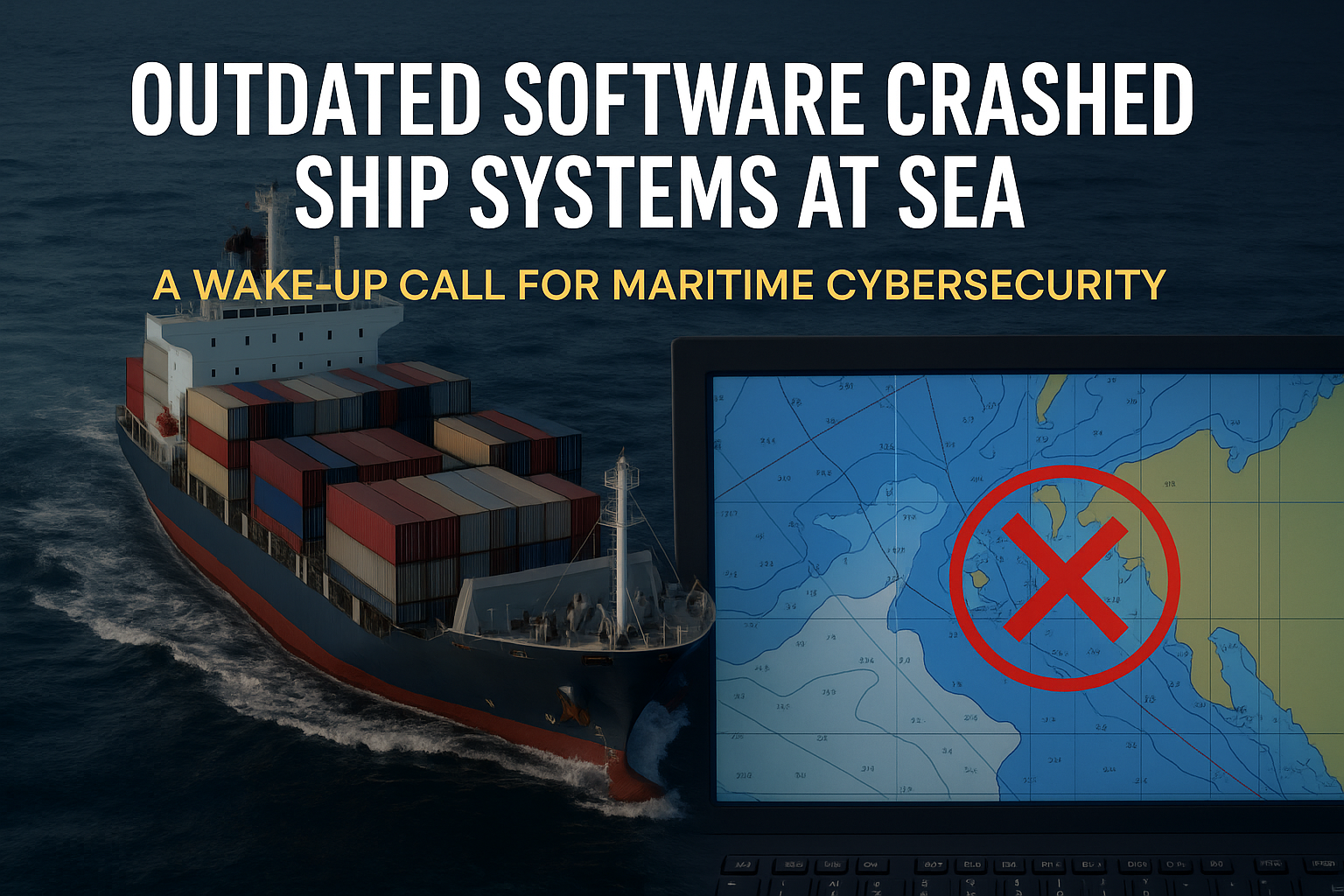When cargo ships go dark in the middle of the sea, it’s not always due to a cyberattack—sometimes it’s outdated software that triggers disaster. At the recent Maritime Cybersecurity Summit, we highlighted the critical importance of keeping vessel systems up to date. One real-life incident made the case crystal clear.
A cargo ship navigating a high-traffic zone with reduced visibility suffered a catastrophic failure of its integrated navigation bridge system. Nearly all onboard navigation systems crashed, forcing the crew to rely on a single radar and paper charts for two days. The root cause? Outdated operating systems that couldn’t support a software update performed just days prior by the manufacturer’s technician.
The fallout was significant:
- The ship remained stuck in port until new ECDIS computers were installed.
- Classification surveyors had to inspect and verify compliance.
- A near-miss report was filed.
- The shipowner bore the full cost of delays and repairs.
This wasn’t a targeted cyberattack—it was a preventable failure of system maintenance. It revealed not just a technical vulnerability but a likely absence of a clear Incident Response Plan (IRP) and recovery protocol. Who should act? What should they do? How should they communicate? None of those questions had clear answers.
At Saturn Partners, our maritime cybersecurity assessments are designed to root out vulnerabilities before they become liabilities. We evaluate technical risks across five key categories:
- Poor system design or access management
- Weak or outdated access controls
- Misconfigured firewalls or implementation gaps
- Procedural missteps or human error
- Software defects or lack of IRP and role clarity
The false sense of safety provided by formerly “isolated” Operational Technology (OT) systems is a thing of the past. As vessels adopt more interconnected IT, OT, IoT, and IIoT systems, we face a new cybersecurity reality: isolation is over, and convergence is here.
Yet many shipowners remain hesitant to invest in modernizing these systems—viewing it as an expense rather than a safeguard. But as this case shows, the cost of inaction can be far greater.
Recommendations
- Audit all navigation and OT systems for outdated software and operating systems.
- Implement an IRP with clear roles and recovery protocols.
- Treat software updates like critical maintenance, not an afterthought.
- Bridge the IT/OT gap by applying proven IT security frameworks to OT systems.
- Invest in regular vulnerability assessments from cybersecurity experts familiar with maritime operations.
Don’t Let Outdated Systems Steer You Into Trouble
Cyber risks don’t always come from external attackers. Sometimes, the biggest threat is hidden in your own systems.
We specialize in securing critical maritime infrastructure—across ship and shore. From OT assessments to compliance readiness and cyber incident response planning, our team helps maritime operators stay ahead of the storm.
Let’s discuss how we can secure your fleet.
Contact us today to schedule a maritime cybersecurity consultation.

